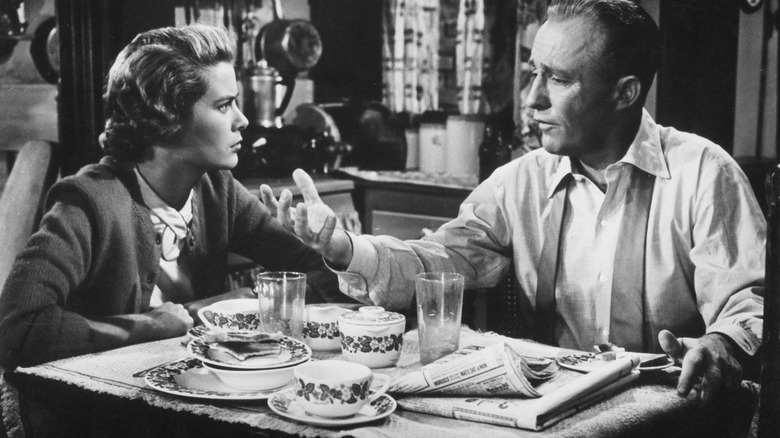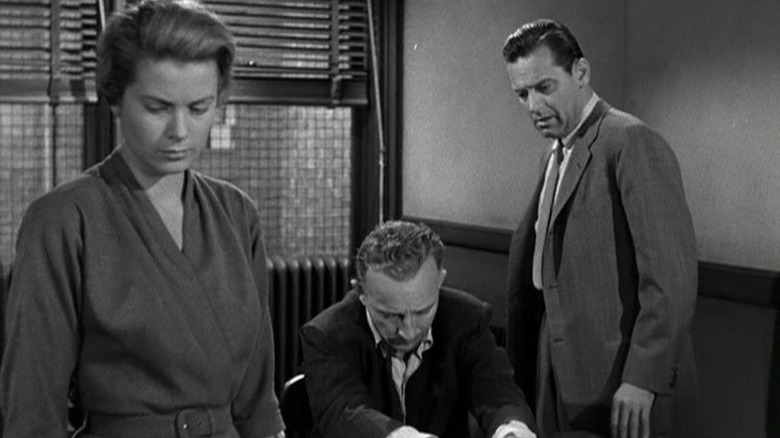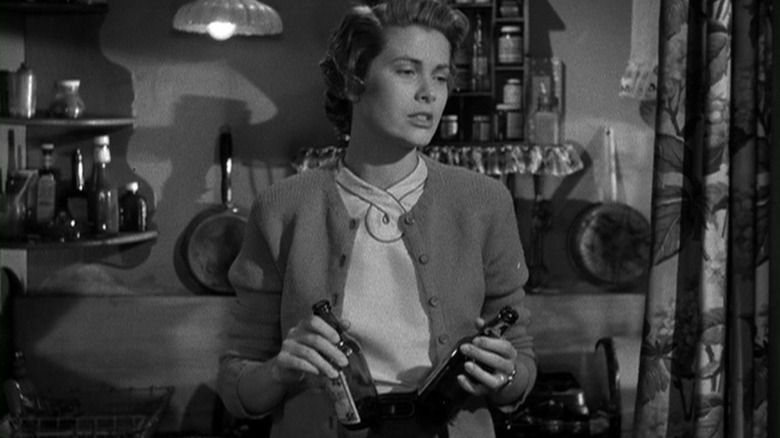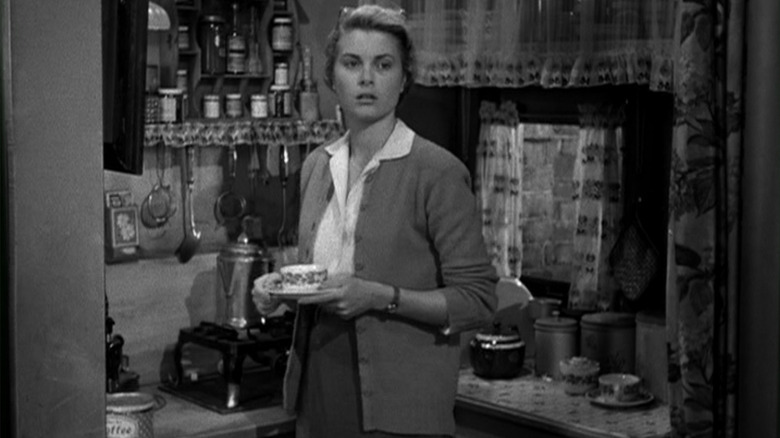The Reason Grace Kelly Walked Away From Hollywood
One of the more notable real-life Hollywood fairy tales is that of Grace Kelly.
Kelly, sold as one of showbiz's most glamorous performers, broke into feature films at age 22 with Henry Hathaway's 1951 film "Fourteen Hours," and she only acted in 10 additional scripted films over the next five years. She also had a prolific TV career, back when the medium was still chock full of theatrical "mini-movie" anthology programs with names like "Kraft Television Theater" and "Prudential Family Playhouse." She worked with John Ford ("Mogambo") and made three films with Alfred Hitchcock ("Dial M for Murder," "Rear Window," and "To Catch a Thief.")
In 1954, Kelly won an Academy Award for her performance in the George Seaton drama "The Country Girl," adapted from the Tony-winning play by Clifford Odets. This was a film she made when being loaned out to Paramount — she was an MGM contract player at the time — and was eventually selected to open the then-still-kinda-new Cannes film festival. Kelly was invited to introduce the film, something she was able to do thanks to a recent temporary suspension from MGM over her refusal to act in a movie opposite Robert Taylor (the reasons for her refusal are unclear). It was in France that she met Hollywood legend Olivia de Havilland who, in turn, introduced Kelly to her husband, Pierre Galante. Galant then introduced Kelly to a fellow named Rainier.
Rainier was the prince of Monaco. He and Kelly hit it off. They married in 1956, and Kelly gave up the Hollywood limelight to become actual royalty.
De Havilland, who passed away in 2020 at the age of 104, gave a 2020 interview with People Magazine detailing the story of how she and her husband effectively pushed Kelly into the lap of the aristocracy.
De Havilland's scheme
De Havilland, an enormous Hollywood legend in her own right, tells enthused stories wherein she drops names left and right. Lest the reader think this is tacky, remind yourself that this is Olivia flippin' de Havilland. She led a long, exciting, and blessed life. For People, she recalled the time when Kelley was in Cannes, and how her husband Galante had caught wind that she was also a passenger. It turns out that Galante knew Prince Rainier through his high birth in a glamorous French location. De Havilland said:
"It was an idea that struck [Pierre] for the first time while dining on the train after he learned Grace Kelly was a fellow passenger. My husband had been born in Nice on the Cote d'Azur. He suggested the meeting between Grace and Rainier at dinner with Paris-Match editor-in-chief Gaston Bonheur, en route to Cannes — an idea immediately and enthusiastically accepted by Gaston."
It was then up to de Havilland to essentially play the more active matchmaker role, having to approach Kelly herself and convince the "Country Girl" star to join de Havilland, Galante, Bonheur, and Rainier around a dinner table. Perhaps they expected sparks to fly. Whether or not anyone expected marriage, who is to say? De Havilland recalls with clarity the first time she met Kelly, on a train, specifically on a small, cramped platform in between two cars.
Strangers on a train
Recall that Kelly was in Cannes to promote a Paramount film she had, at that point, already won an Oscar for. She was allowed to promote it with special permission from MGM, her contract studio (that she was already kind of on the outs from). Anything she did in public was going to count as publicity for MGM, so Kelly would make phone calls prior to hanging out with someone as famous as de Havilland or, indeed, as a European prince. De Havilland recalled:
"Grace struck me on the first encounter as a rather reserved, self-possessed, well brought up young woman. [We met] on the small platform between the dining car and the next carriage when I overtook her to ask if she would agree to a meeting with Prince Rainier. She immediately agreed but made the highly professional provision that such a meeting must first be approved of by the studio sponsoring her visit to Cannes: MGM."
By de Havilland's recollection, MGM did eventually approve of the meeting and Kelly, after some scheduling logistics, agreed to meet with Prince Rainier. The People article sums up a massive set of complications that Kelly had to endure prior to the meeting. A local labor strike let to a citywide power out, leaving Kelly unable to blow dry her hair, see her makeup mirror, or iron her clothes. She prepped hurriedly in the car on the way over, and was in a fender-bender with photographers. From the description, Kelly was having a case of the Mondays. All she would require was a cup of coffee spilled in her lap to complete the "you look rushed" ensemble.
Prince charming
Evidently the meeting was also a little awkward. Prince Rainier was late to the meeting regardless, and Kelly was given a tour of his massive estate by an aide. Rainier eventually arrived and they talked in his private zoo (!). De Havilland only received word from Kelly that the prince was "charming." De Havilland could tell from reports and from Kelly's demeanor that everything had gone well. She was thrilled. De Havilland received additional details she was happy to share:
"Pierre praised afterward how flawlessly Grace endeavored to observe the protocol required for presentation to the prince. I guessed things had gone wonderfully well by Grace's manner upon returning from her presentation to Rainier. When she took her place at the head of the receiving line at the American reception, instead of offering her hand for a handshake, Grace extended her hand as if offering it to be kissed. She was in a state of enchantment."
For the next seven months, the story goes, Kelly and Prince Rainier corresponded privately, keeping their growing romance under wraps. By Christmas, the prince proposed and Kelly accepted. Hollywood immediately became a thing of the past, and she lived the rest of her life as Princess consort of Monaco. From Hollywood royalty to just plain royalty.
Kelly died of a cerebral hemorrhage in 1982 at the age of 52. The wing of the hospital was named after her. She truly lived the dream.



